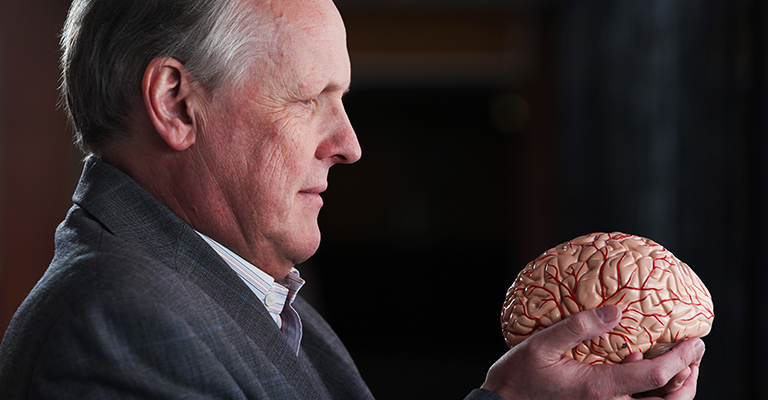Will Manchester supercomputer reveal insights into mysteries of the brain?
Departments Research impact and institutes Robotics and AI 13th July 2022
After building a unique supercomputer to model parts of the brain, its creator Professor Steve Furber says we’re still a long way from fully understanding the complex mysteries of the human mind.
But further study could – one day – mean new medicines to repair brain dysfunction are possible.
He adds, however, that those working on brain exploration are not sure if any modelling based on classical scientific principles, no matter how sophisticated, will ever properly recreate human consciousness – because a biological ‘magic’ may be the missing ingredient.
Intriguingly, the process of giving robots greater brain-like functionality is developing at pace…

Brain gain
Professor Furber and his team at Manchester recently achieved early breakthroughs from the SpiNNaker (Spiking Neural Network Architecture), a supercomputer developed for brain modelling.
The SpiNNaker group has created a real-time cortical microcircuit model and other cerebellum models using the giant device based on campus, and is part of the EU-funded Human Brain Project. The cortex is responsible for many higher-level brain functions such as memory recall and natural language, as well as acting as host to sensory and motor areas.
Professor Furber says that despite significant breakthroughs already achieved by SpiNNaker – built from a million processors – more patience is needed. This, in fact, is just the beginning of the journey.
He shares: “We do not fully understand the function of the basic cortical microcircuit even though we can now model it and those models reproduce biologically verifiable data.
“What we now need is theories of what the circuit is doing, and how it does it, that we can use the models to test.”

Could it be magic?
With such theories in place it might then be possible to construct models of brain subsystems and to explore, for example, what structural disturbances may be behind various forms of brain malfunction.
“Then perhaps we could see what pharmacological interventions might help to restore ‘normal’ brain function,” he continues.
“There is still room for philosophical debate as to whether or not such a Newtonian model [ie classic rules of science] is sufficient to explain higher brain functions – for example, would a sufficiently accurate and detailed model of the cortex itself become conscious?
“Or, must some other biological ‘magic’ be invoked to explain the mysteries of consciousness. We don’t know.”
In parallel to scientists exploring the labyrinthine mysteries of the human mind, other pioneers are looking to further develop artificial intelligence for autonomous systems and robots.
Professor Furber reflected on the crossover from his research with this work: “Could we use an understanding of the cortical microcircuit to endow robots with greater awareness of their environments and a greater ability to interact with that environment?
“I think that is very likely – and on a shorter timescale than the higher level mysteries!”

If you enjoyed this post, be sure to subscribe on our homepage to keep up to date with the latest posts from The Hub.
Words: James Tallentire
Images: Shutterstock, The University of Manchester
Related stories:
- Manchester’s most important brain
- Graphene, AI and the brain: an extraordinary journey into human consciousness
- Raised by Wolves – Will we always know the difference between AI and real people?
- Manchester experts are designing AI-powered machines tough enough to work safely in hostile hotspots
- Why we could save the world with AI: by putting ‘humans back into smart machines’




